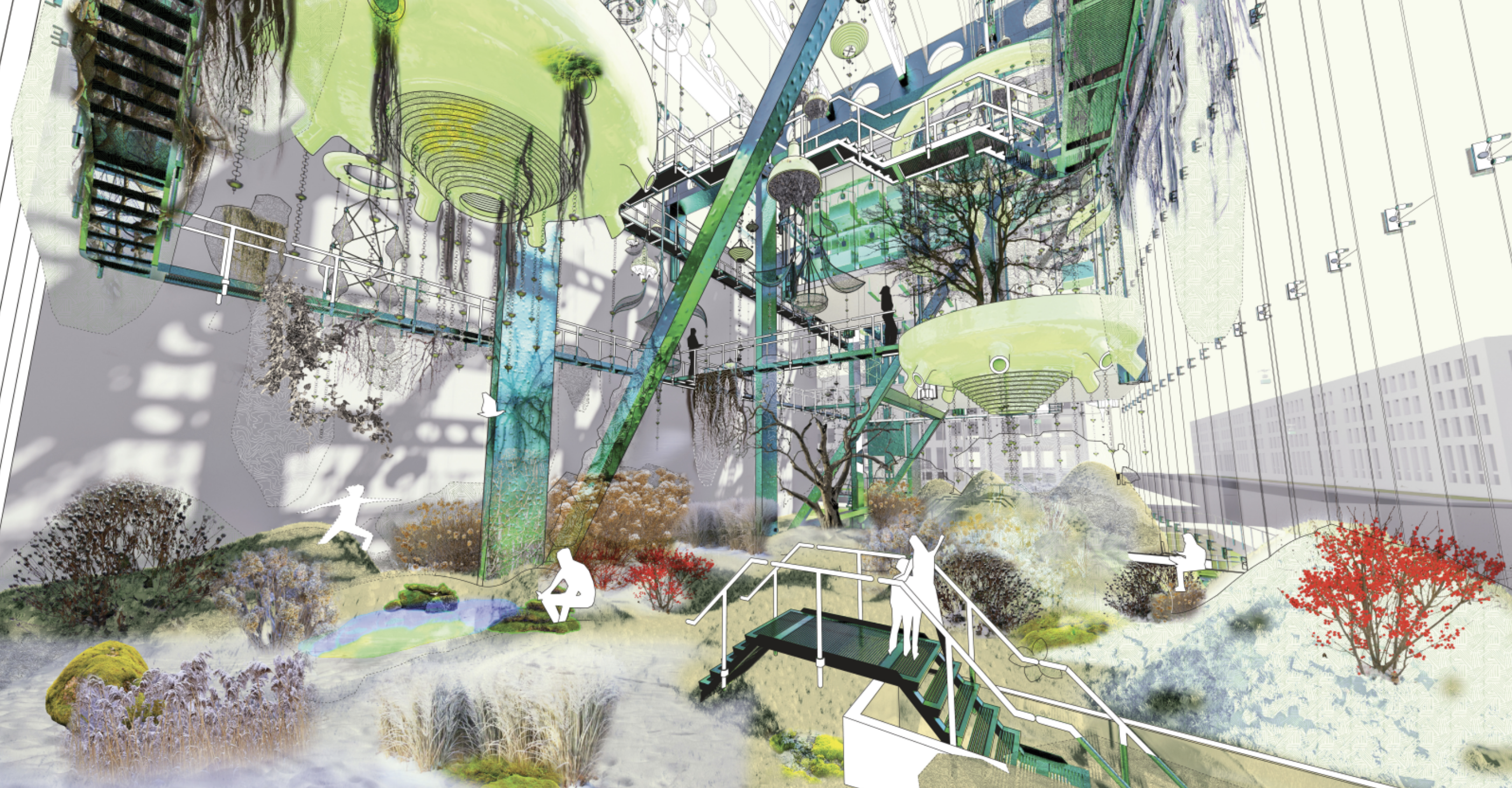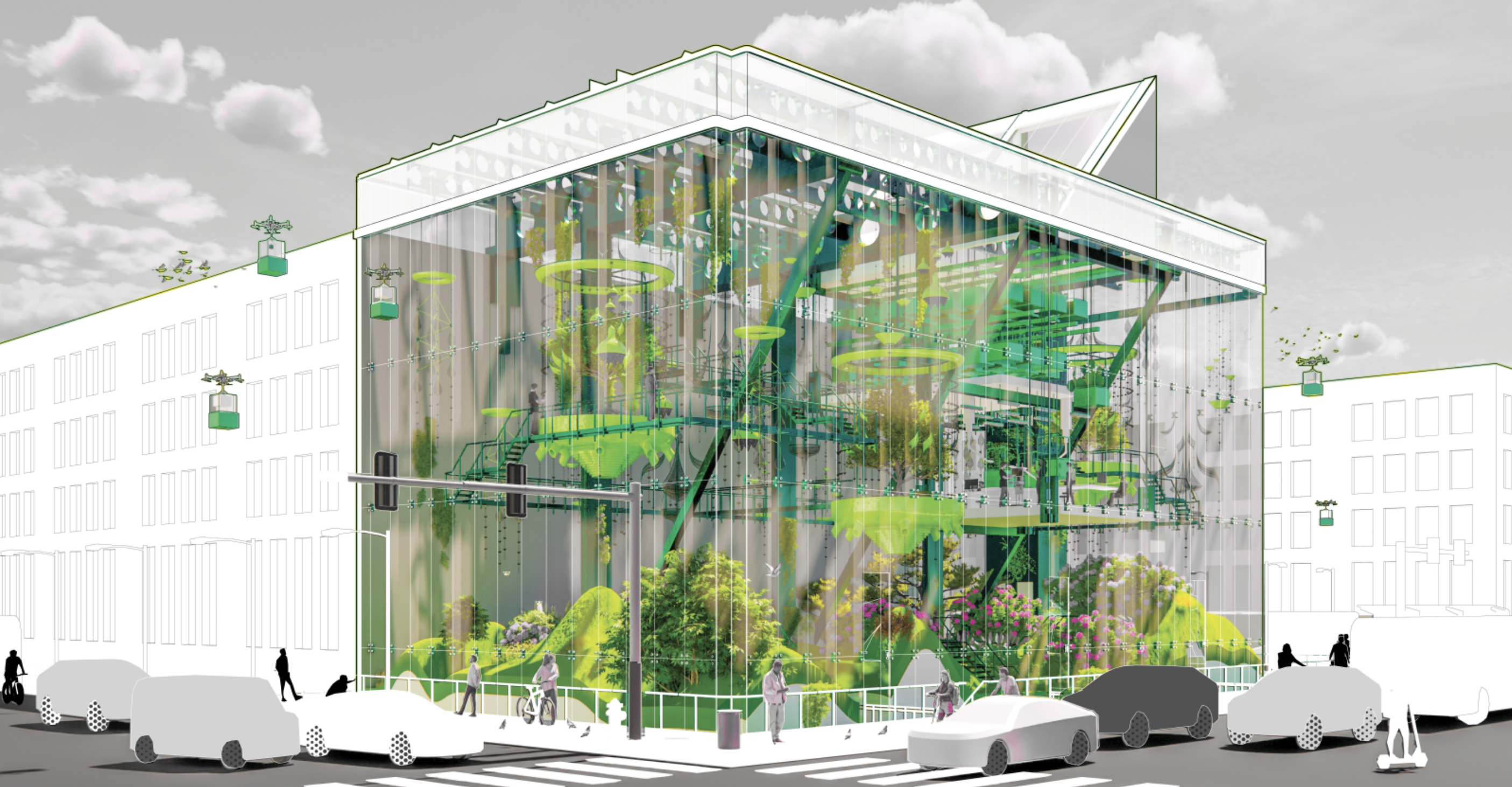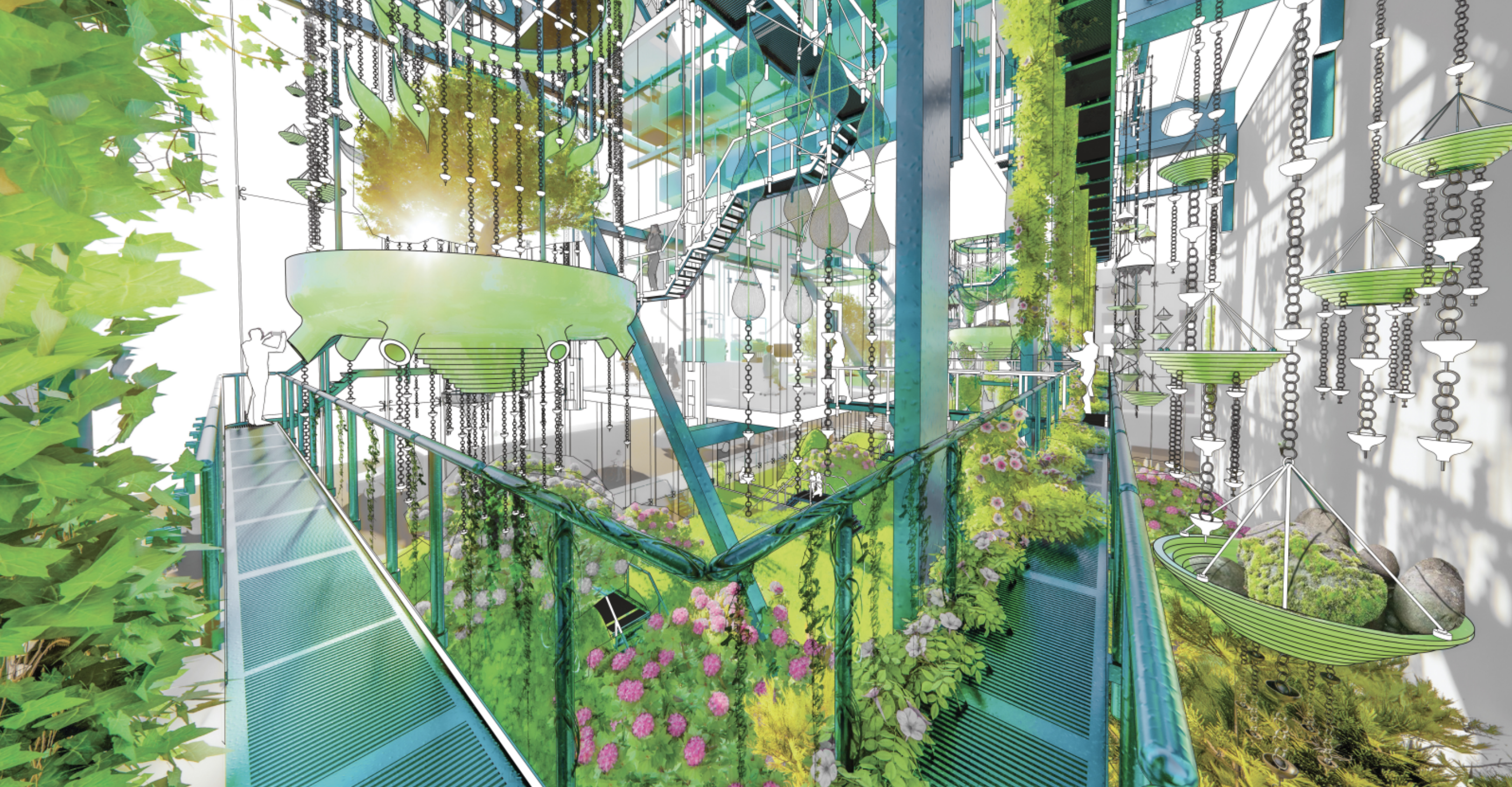
Sirovich Family Student Scholars – Brian Ching & Marley Olson
STEAMplant Faculty Members – Cathryn Dwyre-Perry, Melissa Boo & Audrey Massmann
This project began with a genuine interest in the life forms of the miniature and subterranean in our cities; as mossy patches in our sidewalks or small mushrooms fruiting in our indoor plant pots. As the climate changes precipitously, urban dwellers will increasingly see the wisdom of cohabitation. However, our built spaces are still too human centric.
Our research has led us to recognize that plants enable a shared, collective domain that supports life. This is what we call Vegetal Publics. Moss and mycelia in particular represent prehistoric heritage. The Vegetal Publics, in a way, predates humans: moss as a skilled photosynthesizer has created 25% of Earth’s oxygen and its initial soil layers; while fungi orchestrated the commonwealth of nutrients and water between plants with their networking capabilities. Together, the dynamic-duo has set the baseline for a successful ecological collective.

“Architecture as terrarium” is our concept: a closed or semi-closed system of plant growth where plants can grow optimally with less input of resources. Like how architecture supports, enhances, and shift human society, a new architectural typology can aid humans move into a new collective with Vegetal Publics.
There are good reasons to believe that Vegetal Publics can provide solutions to the dystopian climatic future we face. They channel “ghosts of the botanical past,” as Kimmerer puts it – intimacy and observation are the keys to unlocking an ancient knowledge of and connection to plants. We propose a living plant archive to stitch past, present and future.

Stay tuned for news on the physical exhibition of Vegetal Publics by joining STEAMplant’s mailing list.